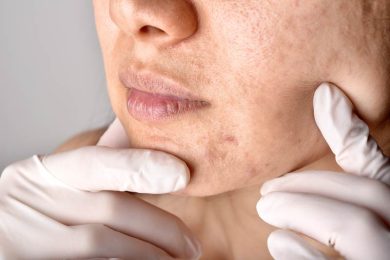What are Voice Disorders?
Voice disorders refer to any condition that affects a person’s ability to speak normally. This can include laryngitis, paralyzed vocal cords, and/or a nerve problem that causes the vocal cords to spasm. People with voice disorders often have hoarse, quivering, strained, or choppy voices, and may also experience pain or a lump in the throat when speaking. Treatment for voice disorders depends on the underlying cause and may include speech therapy, medication, or surgery.

How Does the Voice Work?
What are the Types of Voice Disorders?
There are three main types of voice disorders: functional, organic, and neurologic.
Functional voice disorders are usually caused by bad vocal habits, such as incorrect pitch, loudness, or speaking rate. They can also be caused by psychological factors, such as stress, anxiety, or depression. Most functional voice disorders can be helped with behavioral therapy.
Organic voice disorders are caused by problems with the physical structure of the vocal cords or other parts of the voice box. They can be caused by infection, nerve damage, tumors, or other growths. Many organic voice disorders can be helped with surgery.
Neurologic voice disorders are caused by problems with the nerves that control the muscles of the vocal cords. They can be caused by stroke, Parkinson’s disease, or other neurological conditions. There is no specific treatment for neurologic voice disorders, but some symptoms can be improved with speech therapy.
What Are The Causes And Symptoms Of Voice Disorders?
One of the most common voice problems is vocal cord abuse. This occurs when you use your voice improperly; shouting, whispering, and frequent throat clearing cause strain and fatigue of the vocal cords. Continued abuse can lead to permanent voice damage and a number of serious medical issues such as laryngitis, polyps, cysts, and vocal fold swelling.
Other conditions that can affect the voice include upper respiratory infections, acid reflux, and tumors. If you have a voice disorder, it is important to see your ENT specialist so that the cause can be determined and appropriate treatment can be given.
With proper diagnosis and treatment, most voice disorders can be resolved. If you think you may have a voice disorder, schedule an appointment with one of our specialists at Texas ENT & Allergy.
What is Hoarseness?
What Causes Hoarseness?
How Is Hoarseness Treated?
Many times, hoarseness clears up on its own without any sort of medical intervention. Many patients take a wait-and-see approach, treating symptoms with home remedies that include resting the voice, staying hydrated by drinking plenty of fluids, and using a humidifier to add moisture to the air.
Making certain lifestyle changes—eliminating spicy foods, alcohol and caffeine from the diet, giving up cigarettes, avoiding activities that cause vocal cord strain such as shouting, whispering, or using inappropriate pitch or volume—are all helpful ways to reduce or eliminate the symptoms associated with chronic hoarseness.
Sometimes, a trip to see an ENT specialist is necessary. If hoarseness lasts longer than three weeks, is not accompanied by cold or flu symptoms, affects your ability to swallow or breathe, or otherwise interferes with your livelihood, schedule an appointment with the team atTexas ENT & Allergy.
You will be given a thorough physical examination, including the ears, nose, and throat, and may be given a laryngoscopy or other special test. Treatment depends on the cause and may include medications, surgery, and/or voice therapy.
What is a Videostroboscopy?
How is Videostroboscopy performed?
Who is a Candidate for Videostroboscopy?
If you are experiencing the following symptoms, you may be a candidate for videostroboscopy:
- Hoarseness, breathiness or any other change in voice
- Vocal fatigue
- Soreness, tightness, or a burning sensation in the throat
- The feeling of having something stuck in the throat
- Frequent cough or throat clearing
- Acid reflux




















